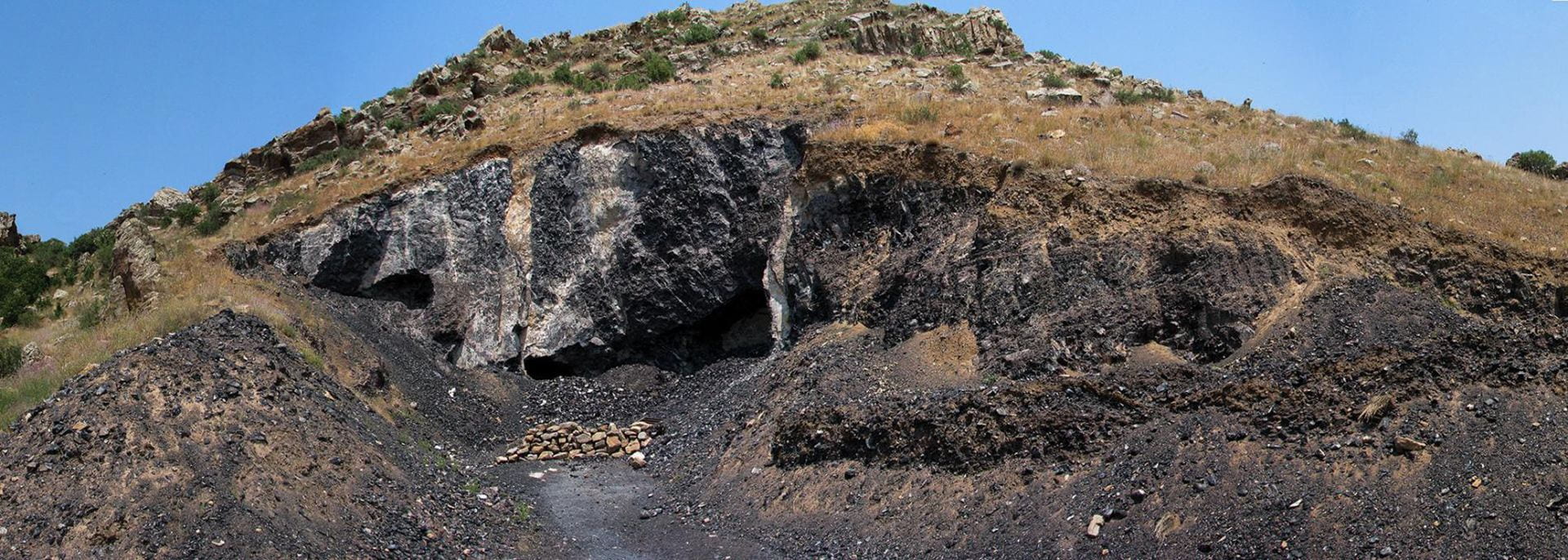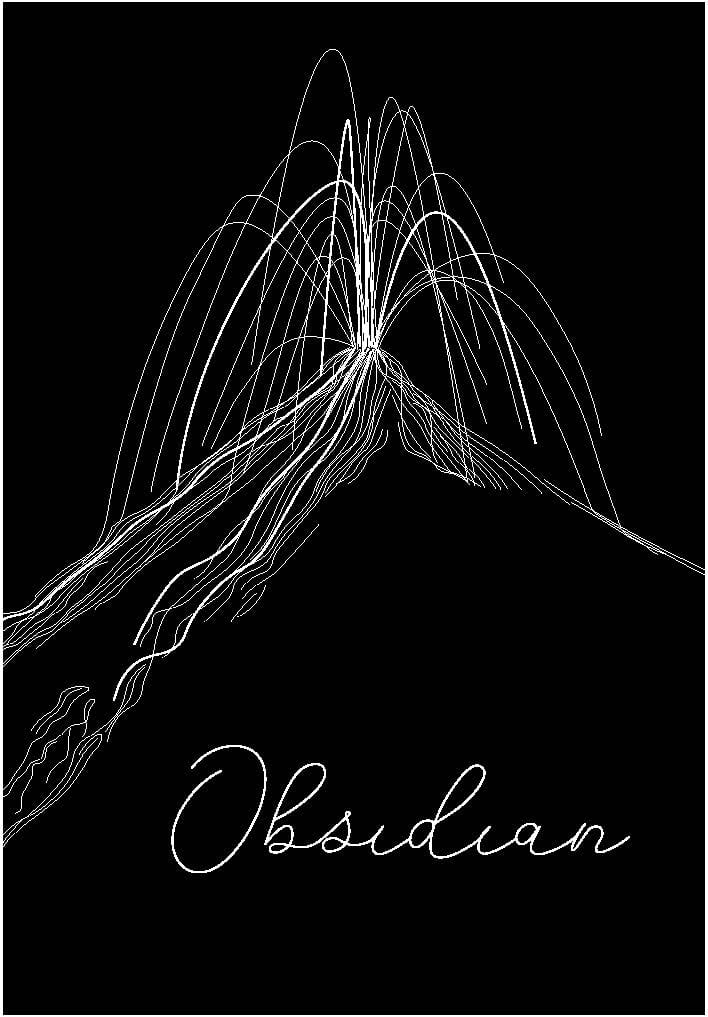Catalytic Conversation with Glenn Adamson on Obsidian

Image Caption: Mount Arteni Republic of Armenia
A Catalytic Conversation on Obsidian
Wednesday, December 8, 2021 3-5 p.m. Pacific
Obsidian is an enigmatic, naturally occurring glass that has been used by cultures from Europe and the Middle East to Oceania and the Americas. CFAR’s Catalytic Conversations serve the practices of individuals and institutions related to art, craft, and design, by providing an opportunity to engage a small group of thinkers in ways that contribute to a project or line of thinking that is in progress. This installment in the series will contribute to the development of an issue of Material Intelligence, a new digital publication published by the Chipstone Foundation. This Catalytic Conversation and related publication will include a broad range of perspectives on Obsidian, drawn from the fields of contemporary art, earth sciences, mesoamerican studies, archeology, and indigenous knowledge. Our goal is to consider this material as a nexus of concerns, ranging from the aesthetic to the ethical.
This event and the Material Intelligence: Obsidian publication are made possible by the Chipstone Foundation.

Participants:
Glenn Adamson [Moderator] (Curator, Writer, and Historian)
David Carballo (Professor of Anthropology, Archaeology, and Latin American Studies, Boston University Boston)
Tom Connolly (former Director of Archaeological Research, University of Oregon Museum of Natural and Cultural History & State Museum of Anthropology)
Anita Grunder (former Professor of Geology and Volcanology, Oregon State University)
Alejandro Pastrana (Researcher, Department of the Dirección de Estudios Arqueológicos of the Instituto Nacional de Antropología e Historia)
Monique Péan (Artist and Activist based in New York City)
Joe Scott (Tribal Educator, Confederated Tribes of Siletz Indians, member of the Confederated Tribe of Siletz Indians)
Glenn Adamson is a curator, writer and historian based in New York. He has previously been Director of the Museum of Arts and Design; Head of Research at the V&A; and Curator at the Chipstone Foundation in Milwaukee. Adamson’s publications include Thinking Through Craft (2007); The Craft Reader (2010); Postmodernism: Style and Subversion (2011, co-edited with Jane Pavitt); The Invention of Craft (2013); Art in the Making (2016, co-authored with Julia Bryan-Wilson); and Fewer Better Things: The Hidden Wisdom of Objects (2018). His newest book is Craft: An American History, published by Bloomsbury, and he is co-host of the online interview series Design in Dialogue.
David Carballo is Professor of Anthropology, Archaeology, and Latin American Studies at Boston University, where he also serves as Assistant Provost for General Education. He specializes in Mesoamerican archaeology and particularly on themes relating to households, urbanism, collective action, and lithic technology. Two books relating to the last are titled Obsidian and the Teotihuacan State: Weaponry and Ritual Production at the Moon Pyramid (2011) and Obsidian Reflections: Symbolic Dimensions of Obsidian in Mesoamerica (2014, edited with Marc Levine). Carballo’s latest book is Collision of Worlds: A Deep History of the Fall of Aztec Mexico and the Forging of New Spain (2020). His previous and ongoing field projects are at Teotihuacan and in the adjacent central Mexican state of Tlaxcala.
Tom Connolly (Ph.D., University of Oregon) recently retired as Director of Archaeological Research for the University of Oregon Museum of Natural and Cultural History & State Museum of Anthropology and retains a research appointment with the Museum. Connolly’s fieldwork has reached across the northern US prairie/plains (Minnesota/North Dakota) to as far away as Scotland, but focuses primarily on Oregon and the Pacific Northwest. His work ranges from the coast to the High Desert; research interests include colonial period archaeology of the American West, ancient Native basketry, and human geography including the role of obsidian and other traceable commodities in prehistoric exchange. Connolly is a co-author of Oregon Archaeology (Oregon State University Press, 2011) and his other publications include books and book-length monographs, book chapters, and journal articles in American Antiquity, Quaternary Research, Radiocarbon, Historical Archaeology, the Journal of California and Great Basin Anthropology, the Journal of Archaeological Science, the Journal of Anthropological Research, the Journal of Northwest Anthropology, the University of Utah Anthropological Papers, and the University of Oregon Anthropological Papers series.
Anita Grunder is a retired professor of Geology and Volcanology at Oregon State University. Her professional interests focus on how magmas that drive long-lived volcanism affect the crust and, in turn, how the crust affects the magmas. She has worked most extensively in the Andes, in the Cascades, and in the Basin and Range Province of the western US. As part of her work in southeastern Oregon she has worked on the tectonic and geochemical significance of rhyolite centers of the High Lava Plains, which are successively younger to the west. This work entailed geochemical characterization of obsidian.
Alejandro Pastrana (Doctor in Archaeology) graduated in 2004 from the Escuela Nacional de Antropología e Historia. He also has a Master in Geology from the Institute of Geology of the Universidad Nacional Autónoma de México. Pastrana has been a researcher in the Department of the Dirección de Estudios Arqueológicos of the Instituto Nacional de Antropología e Historia since 1974. He has focused his research on the archaeological exploitation of the main obsidian sources of Mesoamerica, focusing on the distribution and role of obsidian in domestic, handcrafted, and military activities. He is interested in the symbolism of obsidian in Ancient Mexico. In the obsidian quarry of La Sierra de Las Navajas, he studied the sequence of exploitation of the Teotihuacan, Toltec, and Aztec cultures and the first 100 years after the Hispanic conquest. He has organized international workshops on the experimental reproduction of Pre-Hispanic obsidian knapping techniques.
Monique Péan is an artist and activist based in New York City who explores the tangibility of time, cosmic history, being and identity within the mediums of sustainable objects, sculpture and painting to investigate the intersections of materiality, temporality, metaphysics, nature and culture. Péan is known for her structural work featuring rare sustainably gathered elemental materials including fossilized dinosaur bone and extraterrestrial specimens, ranging in age from tens of thousands to billions of years old. Passionate about philanthropy, Péan has built clean water wells and sanitation projects in Ethiopia, Haiti, India, Nepal, Cambodia, Malawi and Mali serving over 15,800 people. Additionally, Péan is a founder of Management Leadership for Tomorrow (MLT) and Yale School of Management’s Career Advancement Program, which has provided career advancement opportunities to over 700 Black, Latinx and Native American professionals in the United States. Péan received her B.A. in Philosophy, Political Science and Economics from the University of Pennsylvania.
Joe Scott Tribal Educator, Confederated Tribes of Siletz Indians, member of the Confederated Tribe of Siletz Indians. His ancestors include the Lowland Takelma People of the Rogue River Valley. Joseph is a traditional dancer, singer and artisan, and is recognized as a Language and Culture Bearer by the Siletz Tribe. He has always made his home in what has come to be known as Western Oregon, learning and teaching traditional values of place, self, and spirit. Joe has a Master of Science in Education, Curriculum, and Instruction from Portland State University. After nearly twenty years of teaching and learning Tribal history, language, and culture on the Siletz reservation, he has gone on to pursue his passion for traditional ecological science. Joe now shares his teaching and experience with indigenous communities locally, across the country, and abroad.